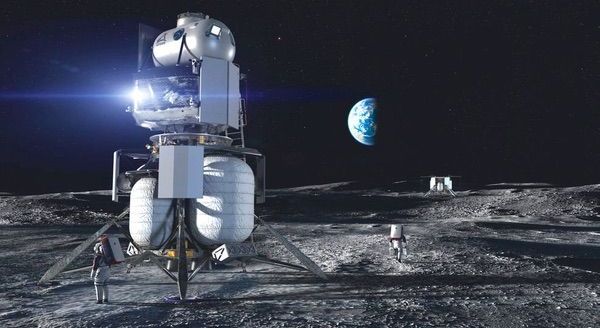Nearly 14 months ago, Vice President Mike Pence spoke at a meeting of the National Space Council in Huntsville, Alabama, and changed the trajectory of NASA’s human spaceflight program. Pence directed NASA to accelerate its schedule for returning humans to the Moon, which at the time called for a landing by 2028. The new goal: land American astronauts on the Moon “within the next five years,” a goal subsequently interpreted to mean by the end of 2024 (see “Lunar whiplash”, The Space Review, April 1, 2019.)
Much of what NASA needed to accomplish the revised goal was already in development, notably the Orion spacecraft and Space Launch System. Both had suffered significant delays but (presumably) would be ready in time to launch NASA astronauts to orbit the Moon, perhaps using the lunar Gateway also under development. What was missing, though, was that last, but most essential, element: a lander to take astronauts down to the surface and then return them to lunar orbit.
No longer. On April 30, NASA announced it had awarded contracts to three companies for its Human Landing System (HLS) program. The awards to Blue Origin, Dynetics, and SpaceX, with a cumulative value of $967 million, will fund initial studies for human lunar lander concepts over the next ten months. NASA will then select one or more companies for full-scale lander development, with the goal of having a lander ready for the Artemis 3 mission before the end of 2024.










Comments are closed.